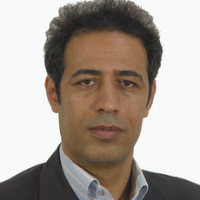Revisiting the Spatial Organization of Neighborhoods in the Iranian City in Terms of the Tradition of Mortmain; Case Study: Aligholi Agha neighborhood, Isfahan
mortmain has been existing for a long time in the field of urbanization. It is a multifaceted phenomenon with various physical, functional, social and economic dimensions. Identifying the effect of mortmain endowment on the building blocks of Iranian-Islamic cities, especially through a historical approach, will help to clarify this concept. With its unique historical neighborhoods, the city of Isfahan which was mainly developed in the Safavid era under the influence of the idea of the Islamic city and mortmain offers a perfect opportunity for innovative historical research. From among the numerous historical neighborhoods in Isfahan, the neighborhood of Aligholi Agha was selected as the case of the present study due to the survival of its mortmain deeds. The hypothesis of this research is the influence of mortmain on the shape of Aligholi Agha neighborhood. The research seeks to find an answer to the question of how tradition of mortmain has affected the structure and creation of traditional neighborhood spaces?. Accordingly, the purpose of this article is to analyze the spatial structure and physical elements of traditional neighborhoods from the perspective of mortmain tradition and based on the structuralism approach in Islamic city studies. Accordingly, in the process of traditional neighborhoods regeneration, a sustainable spatial organization can be achieved by relying on research findings. For this purpose, the research was conducted through a descriptive-analytical method, while reviewing the literature of the position of mortmain in Islamic thought and its impact on the structure of the Islamic city, and using library-documentary as well as field observations, historical documents and maps, and existing mortmain deeds. Our findings indicate that mortmain has been effective in the formation and further historical development of Aligholi Agha neighborhood centers in Isfahan and creating public buildings such as mosques, bath and other public buildings in this neighborhood. Also, due to the doctrinal and social dimensions of the mortmain tradition, the development and creation of Aligholi Agha neighborhood buildings, has created an interconnected and intertwined structure in the center of the neighborhood and has created sensitivity and participation of people in preserving and reviving traditional buildings in this neighborhood.
- حق عضویت دریافتی صرف حمایت از نشریات عضو و نگهداری، تکمیل و توسعه مگیران میشود.
- پرداخت حق اشتراک و دانلود مقالات اجازه بازنشر آن در سایر رسانههای چاپی و دیجیتال را به کاربر نمیدهد.


